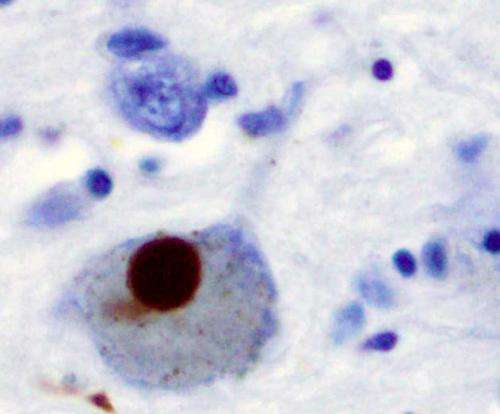Visual clue to new Parkinson's disease therapies

A biologist and a psychologist at the University of York have joined forces with a drug discovery group at Lundbeck in Denmark to develop a potential route to new therapies for the treatment of Parkinson's Disease (PD).
Dr Chris Elliott, of the Department of Biology, and Dr Alex Wade, of the Department of Psychology, have devised a technique that could both provide an early warning of the disease and result in therapies to mitigate its symptoms.
In research reported in Human Molecular Genetics, they created a more sensitive test which detected neurological changes before degeneration of the nervous system became apparent.
In laboratory tests using fruit flies, the researchers discovered that a human genetic mutation that causes Parkinson's amplified visual signals in young flies dramatically. This resulted in loss of vision in later life.
Working with researchers from the Danish pharmaceutical company, H.Lundbeck A/S, they tested a new drug that targets the Parkinson's mutation in flies. This drug prevented the abnormal changes in the flies' visual function.
It is the first time that the compound has been used in vivo and its effectiveness was analysed using the new, sensitive technique devised by Dr Wade. This was originally used for measuring vision in people with eye disease and epilepsy.
Dr Elliott, who is part-funded by Parkinson's UK, said: "If this kind of drug proves to be successful in clinical trials, it would have the potential to bring long-lasting relief from PD symptoms and fewer side effects than existing levadopa therapy."
Dr Wade added: "This technique forms a remarkable bridge between human clinical science and animal research. If it proves successful in the future, it could open the door to a new way of studying a whole range of neurological diseases."
Senior Vice President, Research at Lundbeck, Kim Andersen, said: "This new research may prove to be groundbreaking in the understanding and treatment of Parkinson's disease. Science does not currently have answers for what happens in the brain before and during the disease, but these discoveries may bring us closer to this understanding. This may also give us the opportunity to revolutionize the diagnosis and treatment of Parkinson's disease, for the benefit of patients and their families."
More information: The paper 'Abnormal visual gain control in a Parkinson's Disease model' is published in Human Molecular Genetics hmg.oxfordjournals.org/content … 014/04/08/hmg.ddu159















